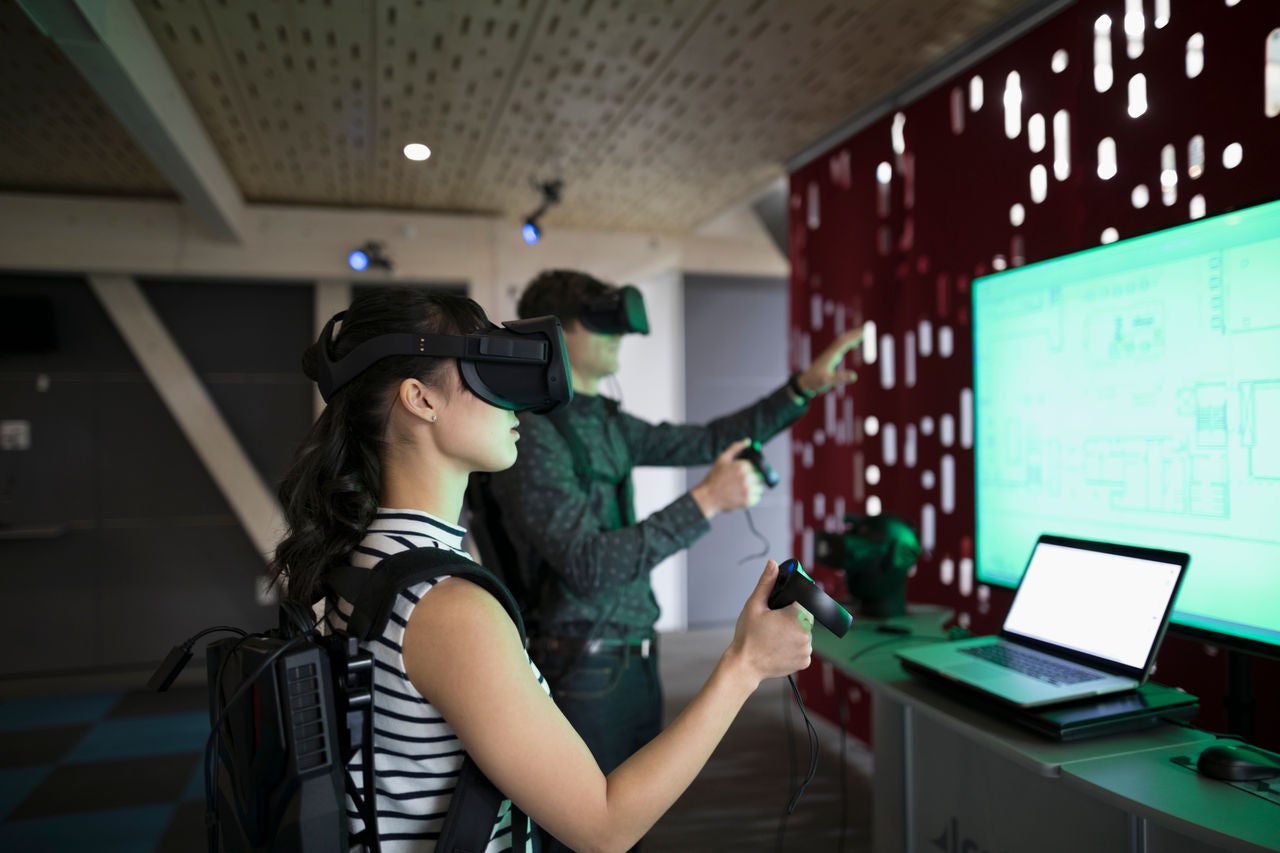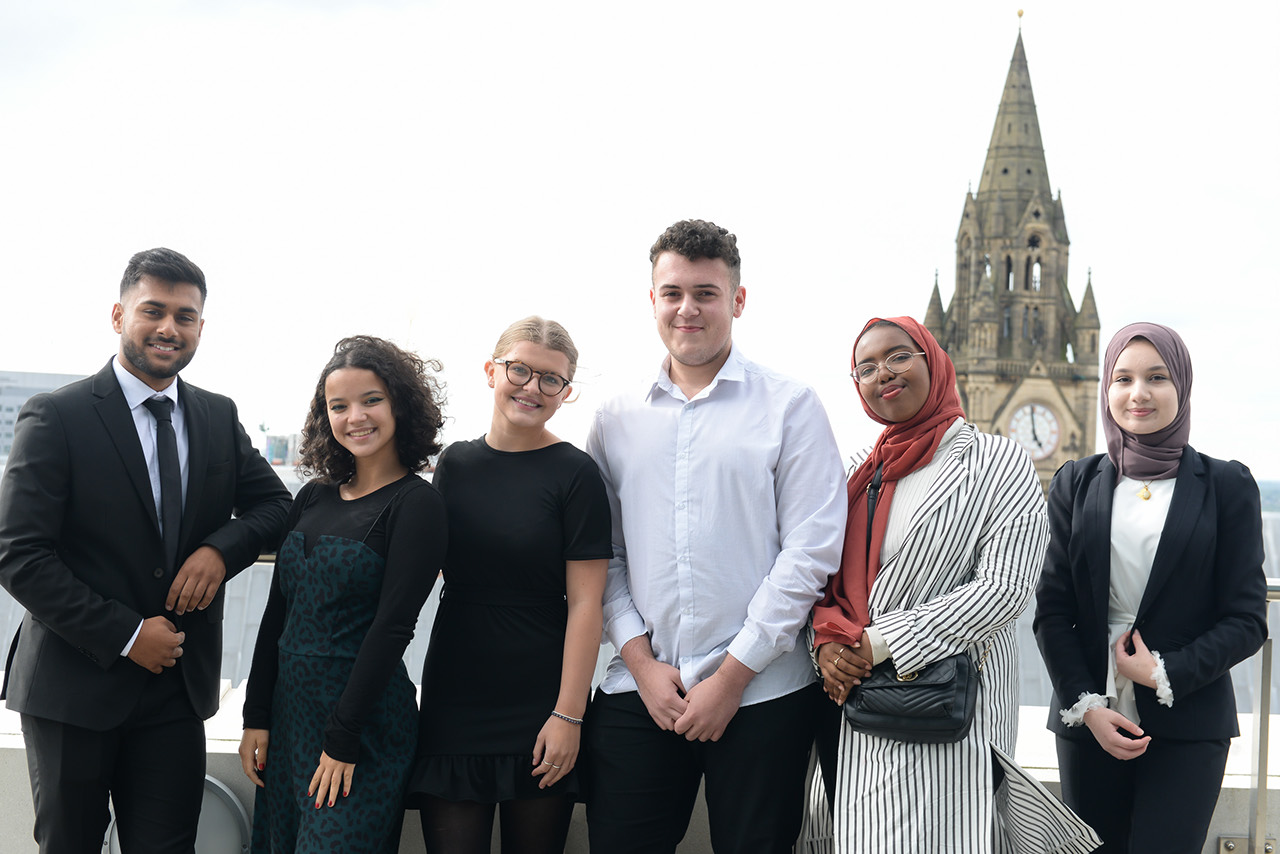The EY Foundation is a charitable company registered in England and Wales and Scotland with registered charity number 1157154 and SC045076. It is also a member firm of Ernst & Young Global Limited

At home or at work, we’ve come to expect constant technological change. So, when the latest innovation comes along, we’re hard to impress. It’s become second nature to dismiss a new device or app heralded as the ‘next big thing’. But occasionally a technology comes along that transforms forever the way we live. This happened with the internet, and it might be about to happen again with the metaverse.
The metaverse has been described as a 3D version of the internet. It can be experienced as augmented reality, connecting the physical and the digital to virtual reality, to full immersion in an interactive 3D virtual environment. Web 3.0 describes how the metaverse functions, moving the internet away from centralized governance to a decentralized model enabled by blockchain technology.
What the metaverse becomes in the coming years is uncertain. But computer games such as Fortnite and Roblox provide a glimpse into the future, creating virtual places where millions play together every day. In the future it is expected that a significant percentage of people will work in the metaverse, and many companies are already building their virtual presence. Predictions of five billion unique metaverse users and an economic value of $8-13 trillion by 2030 are impossible to verify, but the ‘noise’ surrounding the metaverse is only getting louder.
Change at this scale means the metaverse is not just a technology issue, it’s a social one. We should look beyond the 3D graphics and new forms of currency to ask, ‘what impact will it have on the way we live together?’, ‘what are the risks and the opportunities?’ and ‘who is in charge?’. But more important than asking questions, we must understand what action is needed to ensure this is an opportunity that benefits everyone.
Change at this scale means the metaverse is not just a technology issue, it’s a social one.
With the metaverse expected to become a place where many of us work and play within the next decade, this must happen quickly. As we’ve seen with Web 2.0, retro-changing a technology once it has become established is difficult, as ongoing issues such as ‘fake news’, identify fraud and cyber bullying demonstrate.
Writing from the perspective of the EY Foundation, a social mobility charity that supports young people from low-income backgrounds into work, there are several issues to consider.
Perhaps the most obvious is cost. At a minimum, you need access to quick Wi-Fi and a streaming device, such as a smartphone. But some metaverse experiences require specialist technology, with Meta recently launching a £1500 headset. Once inside the metaverse, you may have to pay to enter some virtual spaces, with an expectation, like in the real world, to look the part and ‘fit in’. It’s notable that high-end brands like Prada, Ralph Lauren and Gucci are already selling avatar ‘skins’ (virtual clothes). Will it only be those with the deepest pockets who can thrive at the cutting edge of this technology? Or can the metaverse be developed in a way that is fully accessible via a traditional 2D laptop or mobile screen?
Will it only be those with the deepest pockets who can thrive at the cutting edge of this technology? Or can the metaverse be developed in a way that is fully accessible via a traditional 2D laptop or mobile screen?
In the physical world, employability skills training and work experience are crucial. But what does this look like in a virtual environment? What is the equivalent to attending a skills training course or a paid work experience opportunity? How can we ensure a programme is fully accessible and inclusive? Is a lack of employer connections an even bigger barrier in the metaverse? Maybe the huge potential of this technology will be harnessed to provide free high quality training opportunities and work experience placements at scale. But we should consider too that in an increasingly complex virtual world, the path to meaningful employment could become a harder one to follow for those in poverty. This in turn would widen the digital divide between the haves and have nots.
And then there is the metaverse itself. Who makes the rules? How will governments work with business? Who will ensure employers behave fairly? And in terms of the overall structure, will different metaverse worlds link together i.e., be interoperable, or become fragmented and broken into silos. If it’s the latter, each ‘world’ would follow its own rules, which may or may not be fully inclusive. But it is also the chance for a fresh start. Employers can look again at how they attract, recruit, and retain staff. The mistakes of the past can be swept aside, with technology used to implement talent strategies that provide opportunities for all people – whatever their background.
The mistakes of the past can be swept aside, with technology used to implement talent strategies that provide opportunities for all people – whatever their background.
So what action is needed? Answering that question is the stage we are at now. What has emerged from initial discussions, including with regulators, the gaming sector and other employers is that both a bottom up and top-down approach is required.
Bottom up, we must act to understand the support young people from low-income backgrounds need – which should include consideration of other interconnected issues, such as ethnicity, where they live and gender. One immediate possibility is to work with EY to adapt their human centred approach to developing accessibility in the metaverse for neurologically diverse people. This could be done by creating opportunities for young people from low-income backgrounds to directly experience the metaverse to identify how it can be adapted in response to their specific needs.
Top down, it’s important to collaborate across different sectors of the virtual economy to ensure employers follow shared rules of behaviour that enable all young people to thrive. This will require close cooperation between government, business, civil society organisations and young people.
No one organisation can create change at this scale on its own. We look forward to learning from – and working with – others who want to ensure the metaverse becomes a utopia for young people, not a dystopia.
If you're interested in our work in this area, please contact Ewan Bennie.


